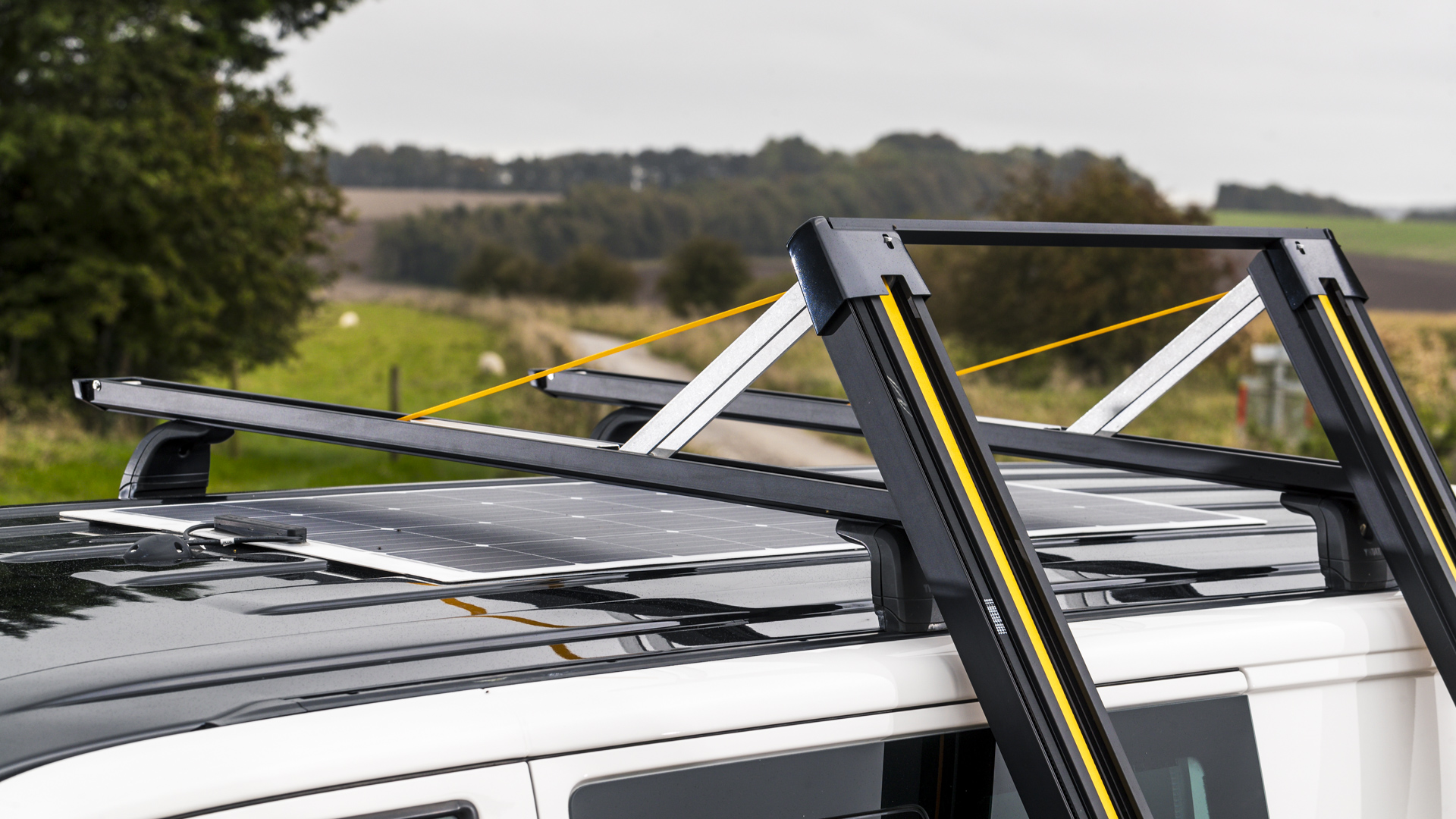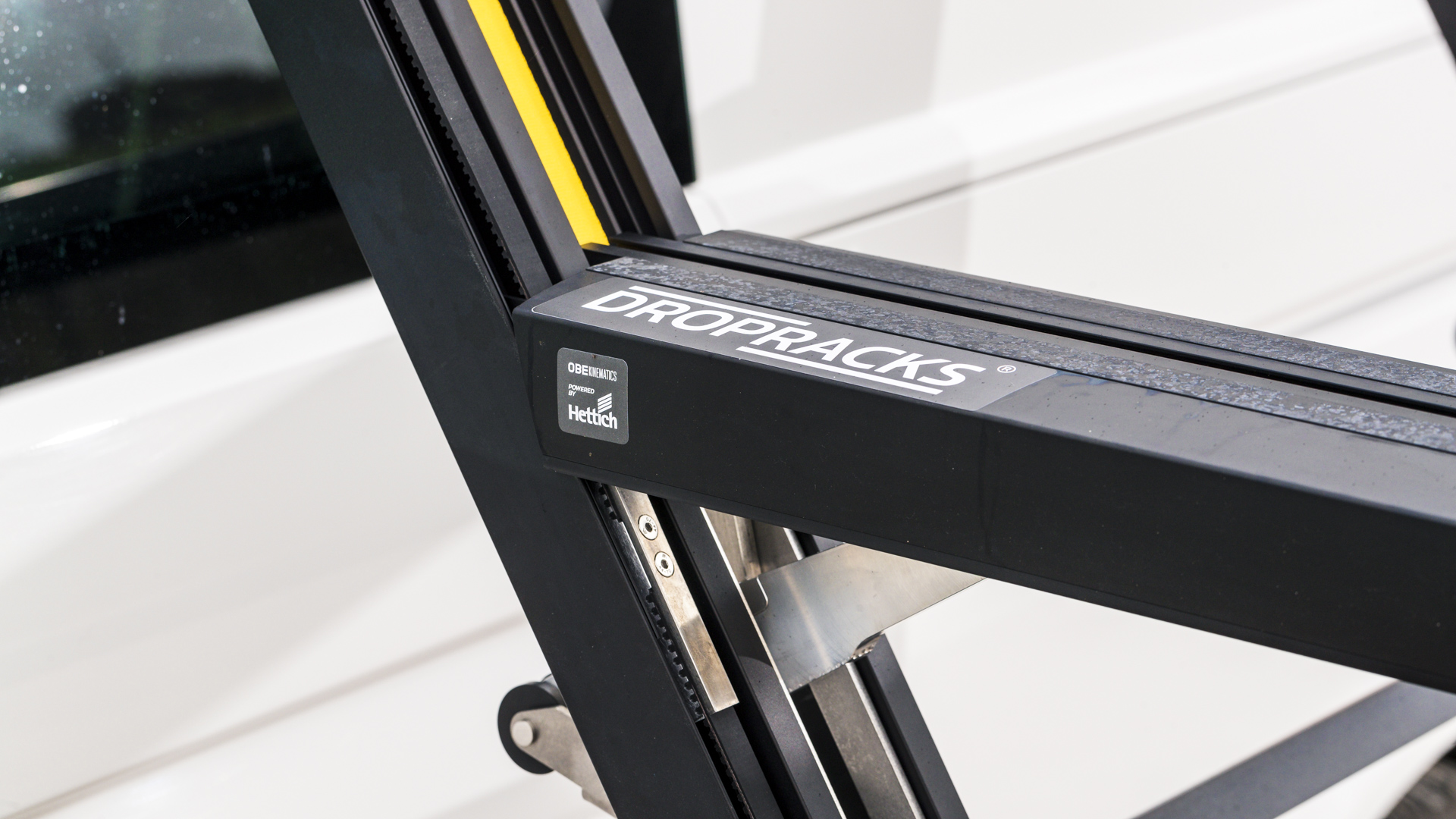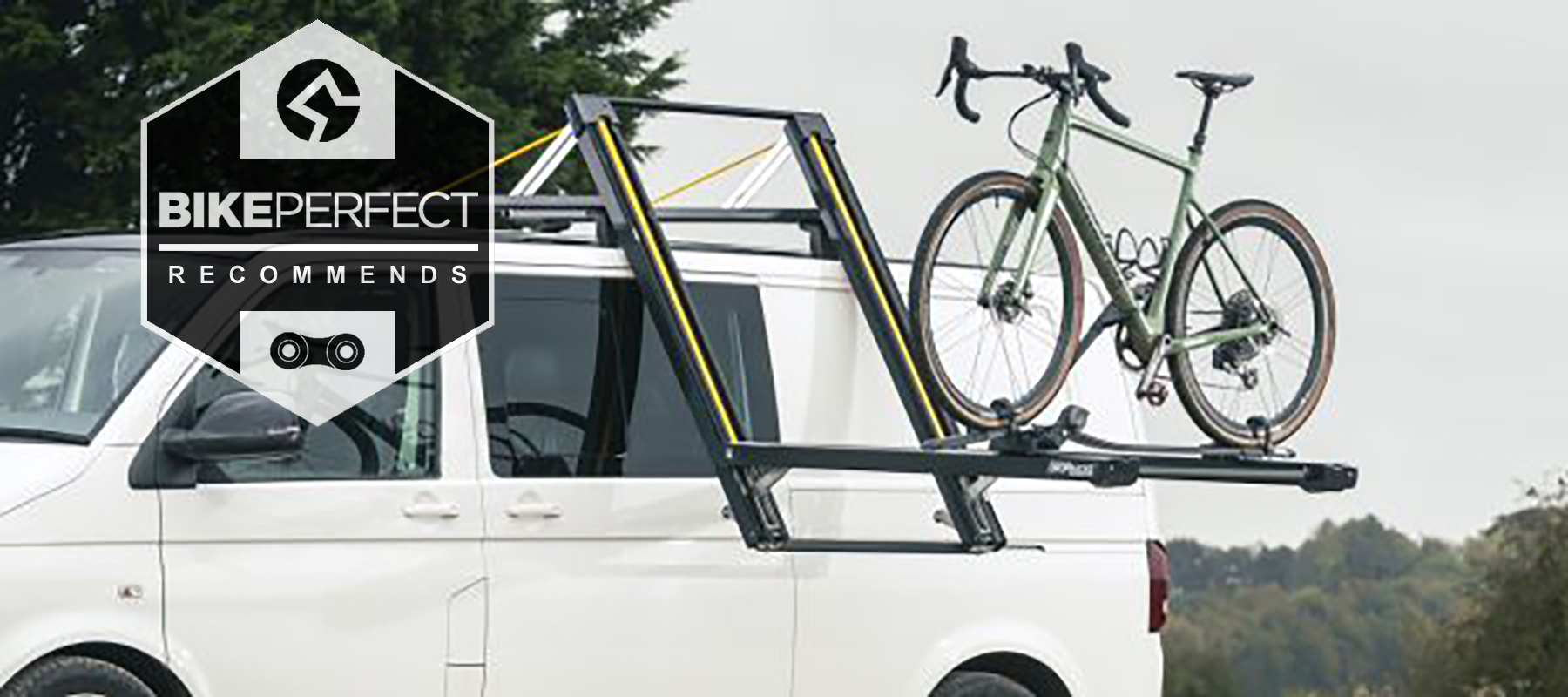Bike Perfect Verdict
Weekend warrior status confirmed, a versatile, solid system that transforms horizontal roof loading.
Pros
- +
Easy to fit
- +
Easy to use
- +
Especially good for high vehicles
- +
Good safety features
- +
Wide range of sport-specific fittings
Cons
- -
Additional fittings cost extra
Why trust BikePerfect
Dropracks is a Norwegian company that has set out to take the pain out of roof loading with a solution that is versatile across a wide range of end uses. It specialises in one product, the Dropracks elevating roof rack, designed and tested in Norway to meet the demands of Nordic winters.
Elevating roof racks are not new and they tend to be expensive and when searching for my own van-related mixed-sport solution I was not always happy with the operation or apparent solidity of the options I found. Could spending a cool £1,500 bring me the reassurance I was looking for?
I tested the XL version, but it is also available in a shorter Sport guise. The website gives guidance on the correct size for different vehicles.

Design and Specifications
The basic premise of Dropracks is simple. Roof bars are mounted on a rack system that allows you to drop the loading space down to a horizontal waist-high platform. Once your cargo has been secured, it is returned to the top of the vehicle using a winch system and, importantly, minimal effort.
Designed to be used in conjunction with cars or vans, the roof bars can be adapted, using different accessories, to a range of work or leisure-related uses. The XL can carry up to 80kg and meets the international standard DIN 75302 for roof racks.

Performance
A T5 van is my work and weekend vehicle; it has to flex between carrying bikes and/or kayaks and when not loaded I have a strict requirement for zero rattle and no noise. On weekends away it’s not always possible to put bikes in the back, especially when using it for sleeping, and tow-hitch mounted racks bring their own access and overnight security problems. Roof mounting seems to be the answer, but on a van it’s a challenge and after a long day frankly it feels like a challenge too far.

Setting up is straightforward; Dropracks works with existing vehicle fittings to attach to the roof. This gives you a standard roof bar foundation on which to build the accessories needed to carry for your chosen activity (I use a bike rack and kayak cradle for example) but you can even fit a roof tent as you would to regular bars.
There is an excellent video on how to assemble the rack and my advice is to watch it. I would also recommend having all the parts laid out in front of you and a willing assistant to help. Even though the rack is designed to be used by one person, in order to be sturdy it is necessarily heavy and an extra pair of hands will help with assembly and fitting. It’s an easy process to follow and only requires a single Allen key in the way of tools. Getting everything in position before finally tightening everything up is crucial because it needs to be dead square to run smoothly. The payback for the attention to detail is that it’s solid and quiet, even when running empty.
Driving locks hold the bars securely in place; clicking them open allows you to slide the bars out horizontally where they will stay, even when loaded, until you engage a crank handle to lower them. If you stop turning the handle at any point, whether lowering or lifting, the rack will stay in place. Even when fully loaded I have never been concerned that it will descend under its own steam. Once the rack is all the way down, the flat platform is a cinch to load or unload. Returning it to the roof is simply a matter of turning the crank the other way until it is horizontal again, then sliding it back into place, engaging the driving locks when closed. I find with just bikes on board I can crank the rack back in place easily myself; with a full load of kayaks it’s helpful to have an extra pair of guiding hands at the far end of the bars.

Verdict
It’s an investment for sure, but the ease of use, solid quality and safety of using the Dropracks has transformed a dread of loading the van, especially for a week away of mixed activity, into something that takes a few minutes. It also makes it easier to attract volunteers to pack up – that really is winning.

Tech specs: Dropracks XL 160cm
- Price: $2,350 / £1,500
- Sizes: Dropracks Sport, Dropracks XL
- Available from: dropracks.com

Russell has been heavily involved in mountain biking for decades. He originally started out designing and building trail center routes, but soon moved specializing in MTB photography and product testing. Over the years, he's shot and written for just about every British MTB mag and website in existence, including MBUK, What Mountain Bike, Bikeradar.com and most recently Bikeperfect.com. While Russ has ridden MTB bikes of all kinds, he mostly enjoys big days out on his e-MTB or gravel bike these days.

